
|
Astronomy Picture Of the Day (APOD)
 M104: The Sombrero Galaxy
M104: The Sombrero Galaxy
8.11.1995
The famous Sombrero galaxy (M104) is a bright nearby spiral galaxy. The prominent dust lane and halo of stars and globular clusters give this galaxy its name. Something very energetic is going on in the Sombrero's center, as much X-ray light has been detected from it.
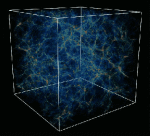 Simulating the Universe
Simulating the Universe
7.11.1995
The above cube represents a chunk of our universe as simulated by the Grand Challenge Cosmology Consortium (GC3). The cube is huge - it would take light 500 million years to cross it. Low density gas is shown as blue, and high density gas as red.
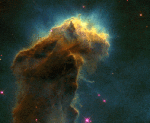 Eagle EGGs in M16
Eagle EGGs in M16
6.11.1995
Star forming regions known as "EGGs" are uncovered at the end of this giant pillar of gas and dust in the Eagle Nebula (M16). EGGs, short for evaporating gaseous globules, are dense regions of mostly molecular hydrogen gas that fragment and gravitationally collapse to form stars.
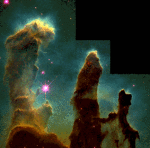 M16: Stars Upon Pillars
M16: Stars Upon Pillars
5.11.1995
How do stars form? This stunning picture taken recently by the Hubble Space Telescope gives us a first hand glimpse. Here evaporating gaseous globules (EGGs) are captured emerging from pillars of molecular hydrogen and dust in the Eagle Nebula (M16).
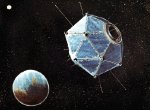 Vela Satellites: The Watchers
Vela Satellites: The Watchers
4.11.1995
In October of 1963 the US Air Force launched the first in a series of satellites inspired by a recently signed nuclear test ban treaty. Signatories of this treaty agreed not to test nuclear devices in the atmosphere or in space.
 Neptune's Moon Proteus
Neptune's Moon Proteus
3.11.1995
Proteus is the second largest moon of Neptune behind the mysterious Triton. Proteus was discovered only in 1982 by the Voyager 2 spacecraft. This is unusual since Neptune has a smaller moon - Nereid - which was discovered 33 years earlier from Earth.
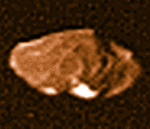 Jupiter's Moon Amalthea
Jupiter's Moon Amalthea
2.11.1995
Amalthea is Jupiter's fifth largest moon, much smaller than the four Galilean satellites Io, Europa, Ganymede, and Callisto. The orbit of Amalthea is inside of these moons, and with its long axis always pointing toward Jupiter. It's dark surface color is probably due to sulfur being expelled from Io.
 The Red Rectangle
The Red Rectangle
1.11.1995
The unusual geometry of this stellar nebula creates somewhat of a mystery. At the nebula's center is a young binary star system that probably created the nebula, but how? This type of nebula shows a "bipolar flow" which carries a significant amount of mass away from the central stars.
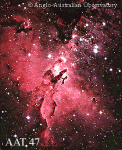 M16: Dust and an Open Cluster
M16: Dust and an Open Cluster
31.10.1995
The photogenic M16 shown above is composed of a young star cluster and a spectacular emission nebulae lined with distinct regions of interstellar dust. Most of the stars in the cluster can be seen offset just above and to the right of the photograph's center.
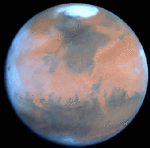 A Halloween Invasion from Mars
A Halloween Invasion from Mars
30.10.1995
Orson Welles became an instant legend on Halloween in 1938 for his radio dramatization of H.G. Wells' "War of the Worlds". Some listeners who did not realize it was a theatrical production were driven to near panic by this fictional account of invaders from Mars.
|
January February March April May June July August September October November December |
|||||||||||||||||||||||||||||||||||||||||||||||||